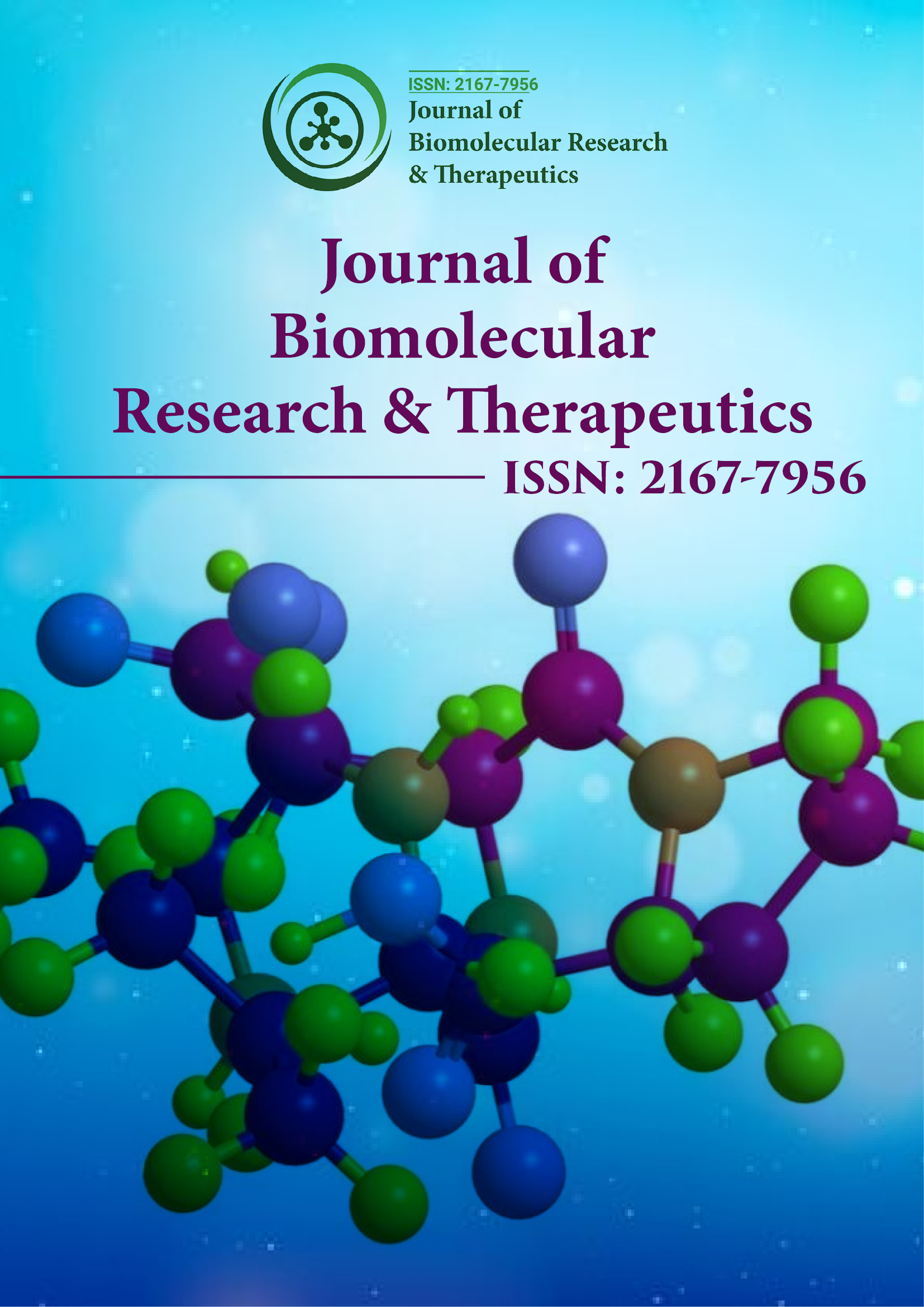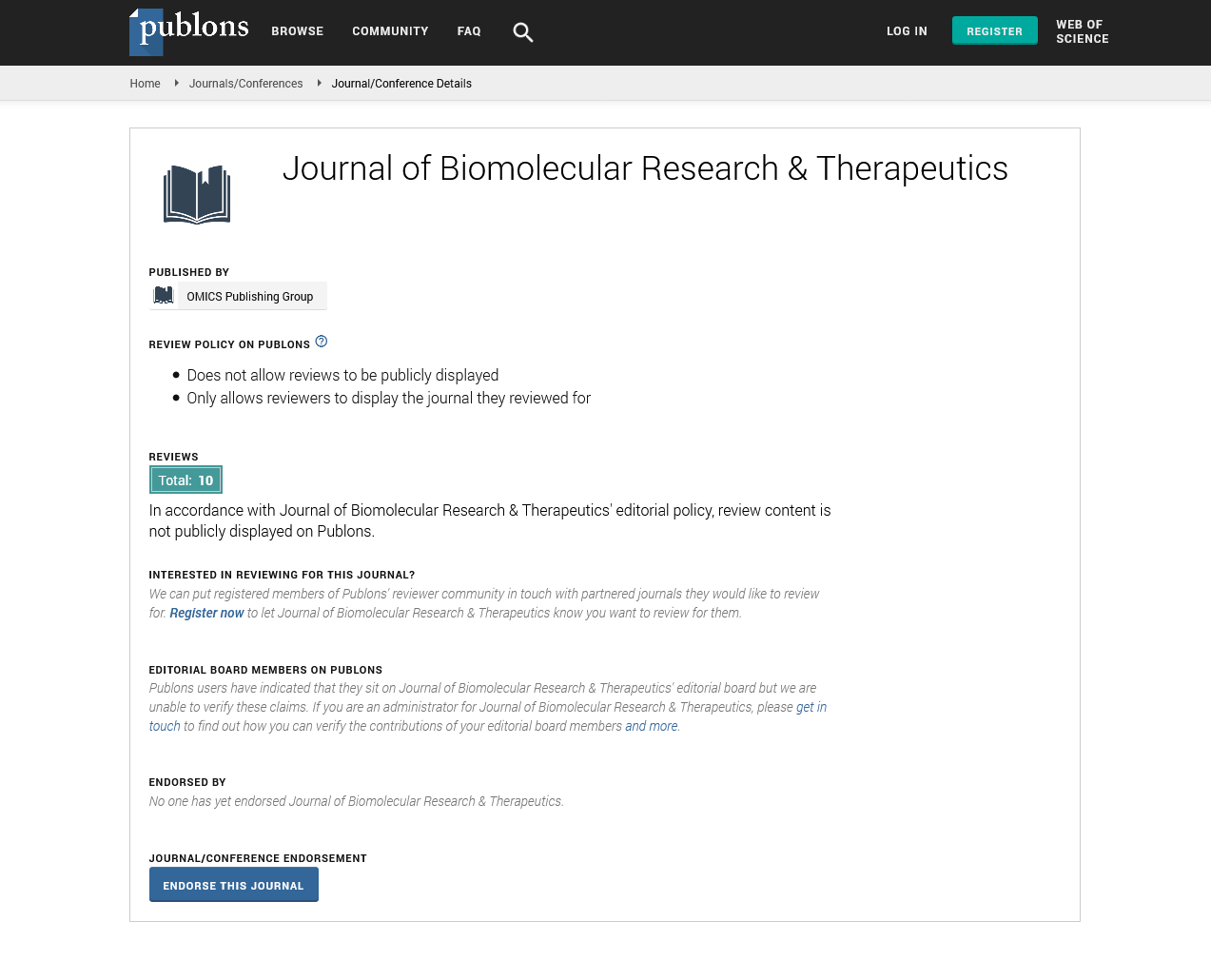Indexed In
- Open J Gate
- Genamics JournalSeek
- ResearchBible
- Electronic Journals Library
- RefSeek
- Hamdard University
- EBSCO A-Z
- OCLC- WorldCat
- SWB online catalog
- Virtual Library of Biology (vifabio)
- Publons
- Euro Pub
- Google Scholar
Useful Links
Share This Page
Journal Flyer

Open Access Journals
- Agri and Aquaculture
- Biochemistry
- Bioinformatics & Systems Biology
- Business & Management
- Chemistry
- Clinical Sciences
- Engineering
- Food & Nutrition
- General Science
- Genetics & Molecular Biology
- Immunology & Microbiology
- Medical Sciences
- Neuroscience & Psychology
- Nursing & Health Care
- Pharmaceutical Sciences
Perspective - (2024) Volume 13, Issue 4
Functional Food vs. Bioavailability and Digestibility of Biologically-Active Components
Aziz Khan*Received: 10-Feb-2020, Manuscript No. BOM-24-3336; Editor assigned: 13-Feb-2020, Pre QC No. BOM-24-3336 (PQ); Reviewed: 27-Feb-2020, QC No. BOM-24-3336; Revised: 01-Jul-2024, Manuscript No. BOM-24-3336 (R); Published: 29-Jul-2024, DOI: 10.35248/2167-7956.24.13.394
Introduction
Functional food, also referred to as probiotic or nutraceutical, is a type of food which exerts a positive impact on health by minimizing the risk of development of metabolic syndrome diseases. It should be an inseparable element of an everyday diet and have a high content of a certain bioactive component, while its positive effect on a human body should appear after the intake of a typical dose of such a food product.
Description
What is more, the fortification of food products is the most effective and simultaneously-relatively cost-effective method allowing for completing any deficiencies of dietary components. Let us not forget either, that a contemporary consumer is an aware person searching for the impact of diet on health and wellbeing, reading food labels and paying attention to the quality of food products. Hence, a growing increase is still observed in healthy nutrition, natural foods, functional foods and foods enriched with bioactive components that exhibit antioxidative, anti-inflammatory and anti-atherosclerotic activities. The bioactive food constituents with documents health benefits include, among others: polyphenolic compounds, terpenoid compounds, dietary fiber, vitamins, mineral components, oligosaccharides, amino acids, proteins, polyunsaturated fatty acids and many others. They occur in food in the natural form and exert beneficial effects on multiple physiological and cellular mechanisms in the body, just to mention: Delay the aging process and reduction of the risk of development of inflammatory conditions and cardiovascular diseases. Food products eliciting health benefits become increasingly popular and their assortment and quantities on shop shelves grow steadily.
However, special attention should be paid to the issue of bioavailability and digestibility of bioactive ingredients of this type of food, because the mechanism of action and the bioavailability of these components from the digestive system affect the degree and mode of their interactions with the human body.
The effectiveness of their absorption will depend on many factors, including i.e., pH value of the environment, molecular weight, degree of polymerization or attached sugar molecule. In the case of polyphenolic compounds present in the form of glycosides, they must be broken down before penetrating the biological membrane and the aglycons be absorbed by simple diffusion. Considering the bioavailability and digestibility of solid products, they will be much more complicated compared to the liquid products, because they contain a complex organic matrix consisting of various components. The bioavailability of individual components will mainly depend on their diffusion properties and on the susceptibility of the matrix to digestion. The availability of nutrients without a matrix is much greater than of the same component contained in the food product. Therefore, their release through digestion in the digestive tract is often limited and dependent on the susceptibility to digestive enzymes, since nutrients chemically combine into multimolecular compounds. To penetrate the gastrointestinal barrier, they must be depolymerized to smaller particles. This proceeds via digestion process in the gastrointestinal tract involving digestive enzymes. The bioavailability and digestibility of food products are determined by the degree of enzymatic hydrolysis with the in vitro methods under laboratory conditions and by their coefficients set for the animal or human body in vivo. However, it is believed that the analysis of the potential bioavailability and digestibility of nutrients of functional foods is an issue requiring much more attention.
Conclusion
Therefore, there is a need to conduct research on the broadly understood bioavailability and digestibility of nutrients focusing mainly on components with health-promoting effects. This will allow the dissemination of knowledge about the fate of food and its constituents not only in the scientific community but also among consumers. We encourage you to undertake publishing activities aimed at bringing the latest scientific news in the field of functional foods, bioactive diet components and their impact on the human body. The information presented will certainly arouse considerable interest among a large group of our readers.
Citation: Khan A (2024) Functional Food vs. Bioavailability and Digestibility of Biologically-Active Components. J Biomol Res. 13:394.
Copyright: © 2024 Khan A. This is an open-access article distributed under the terms of the Creative Commons Attribution License, which permits unrestricted use, distribution, and reproduction in any medium, provided the original author and source are credited.

